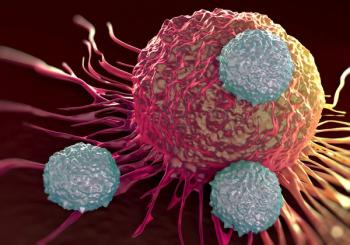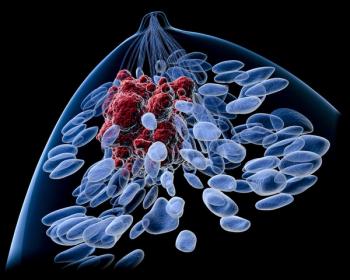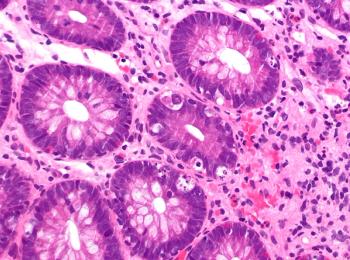
Oncology NEWS International
- Oncology NEWS International Vol 11 No 10
- Volume 11
- Issue 10
Vaccine Turns Immune System Against Cancer Cells
WASHINGTON-The human body has strong immune defenses against cells of foreign species. For example, cells that produce a sugar known as galactose-alpha(1,3)galactose, found in many mammalian species but not in humans, trigger a hyperacute response in humans that destroys the great majority of the interloper cells. Cancer cells, however, which also contain many molecules not found in normal cells, nonetheless often elude the immune system’s defenses.
WASHINGTONThe human body has strong immune defenses against cells of foreign species. For example, cells that produce a sugar known as galactose-alpha(1,3)galactose, found in many mammalian species but not in humans, trigger a hyperacute response in humans that destroys the great majority of the interloper cells. Cancer cells, however, which also contain many molecules not found in normal cells, nonetheless often elude the immune system’s defenses.
A single enzymealpha(1,3)galacto-syltransferase or alpha-GTcreates the foreign sugar. Now, researchers at the Stoddard Cancer Research Institute, Methodist & Lutheran Health System, Des Moines, are trying to exploit the natural immunity of the human to the nonhuman enzyme and turn the immune system that attacks foreign species cells against human breast cancer cells.
Charles J. Link, Jr., MD, director of the Institute, reported the work at the Susan G. Komen Breast Cancer Foundation 5th Annual Conference on Innovations in Quality Care.
Getting that foreign enzyme into human breast cancer tissues would produce the sugar, causing the immune system to perceive the breast cancer cells as foreign and destroy them, Dr. Link explained.
In effect, breast cancer cells infected with the foreign enzyme and introduced into a patient would act as a vaccine against the individual’s own breast cancer cells.
Tests on a mouse model have thus far proved the theoretical principle, Dr. Link said, and data are being gathered with an eye toward undertaking human trials. To that end, the alpha-GT gene has been cloned into an artificial herpesvirus that has a high propensity for infecting breast cells.
In the animal studies, breast cancer was induced both in knockout mice lacking alpha-GT and in normal mice. The gene was then inserted into the knockout mice.The virus-borne alpha-GT infection afforded the knockout mice "complete protection" from breast cancer cells, Dr. Link said, whereas every one of the normal controls had died of the cancer within 17 days.
Articles in this issue
about 23 years ago
FDG-PET Predicts Prognosis in Primary Osteosarcomaabout 23 years ago
Three Themes to Guide von Eschenbach at NCIabout 23 years ago
Arimidex Approved for Early-Stage Breast Cancer in Postmenopausal Ptsabout 23 years ago
Long-Term Exposure to Diesel Exhaust Poses Lung Cancer Riskabout 23 years ago
Most Americans Unaware of Excessive Weight as a Risk for Some Cancersabout 23 years ago
Three Themes to Guide von Eschenbach as NCI Directorabout 23 years ago
Gleevec Gets FDA Priority Review for First-Line Use in Early CMLabout 23 years ago
New Anti-HIV Agent Prevents Virus From Entering Cellabout 23 years ago
Docetaxel/Gemcitabine Effective in Advanced NSCLCabout 23 years ago
Infusional FUFOX: Better PFS in Advanced Colorectal CancerNewsletter
Stay up to date on recent advances in the multidisciplinary approach to cancer.

















































































